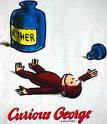Last Thursday I attended a public reading for the fiction writers Tracy Daugherty and Marjorie Sandor, who are husband and wife. Because of this relationship I thought it would be interesting to focus my response around the comparison of their two styles.
I think that both writers did a great job of using details, images, objects, etc. to move their writing. They used these things to connect, relate, and explore the human psyche and emotions central to the piece. However, their approach to these techniques were different. In class we discussed resonant objects, making a specific thing (e.g. an object) "dense with literature", and Sandor was able to demonstrate this technique well. For example, she used a white cat (from the piece of the same name) as a complex metaphor for the theme of the piece: overlooking what is important in life. She also does this in another work when she uses the intense memory of a breakfast restaurant to explore the trivial things that become inexplicably sublime to us, as well as nostalgia and memory. In contrast, Daugherty's use of details, images, objects, etc. was more fleeting and flowing. Where Sandor used limited major metaphors to explore a complex concept or emotion, Daugherty used a stream of them. For example, he used the image of a "foal trying to stand" in "One Sound". Daugherty's tendency towards employing a host of images and metaphors also illuminates another difference in their styles. Daugherty is more of a storyteller; Sandor builds her pieces around the abstract. Where Daugherty is traditional and tells a narrative, Sandor is more driven by concepts than action. For instance, Sandor included very little dialogue. However, both writers focus their work on a deep concept. The difference is that Daugherty does not use one extended metaphor, but a host of images, metaphors, etc. that connect or explain some element of this complex concept. The two writers also differ in tone and topic choice. Sandor's voice is not intense or bold, but rather subtle and journalistic. At times she lays out necessary information as if for a newspaper, which reminded me of the writing of Mitch Albom. This subtle, straight forward style works surprisingly well with her topics of complex, intangible ideas. Daugherty's voice and topic choices reminded me of John Steinbeck. In general, his metaphors, setting, imagery, etc. is more realistic and concrete than Sandor, at least on the surface. He uses literal descriptions and attention to detail to convey the deeper meanings of his work. For example, nature is prevalent in his fiction. This reflects on his flowing, insistent voice. He relentlessly presents images, descriptions, related ideas, flashbacks, etc. that are all relevant to the overarching theme. Furthermore, his flowing style is enhanced by good use of repetition and varying sentence structure. For instance, in "Valley Winter" he uses rainfall to go from one image to the next (i.e. "The rain fell on...The rain fell on..."). A good metaphor for the difference in the two writer's voices is this: Sandor is an ocean being explored and Daugherty is a swift river.
Overall, I was both impressed and entertained by Daugherty and Sandor, and thought that the public reading was enjoyable.
Sunday, December 6, 2009
Subscribe to:
Post Comments (Atom)

No comments:
Post a Comment